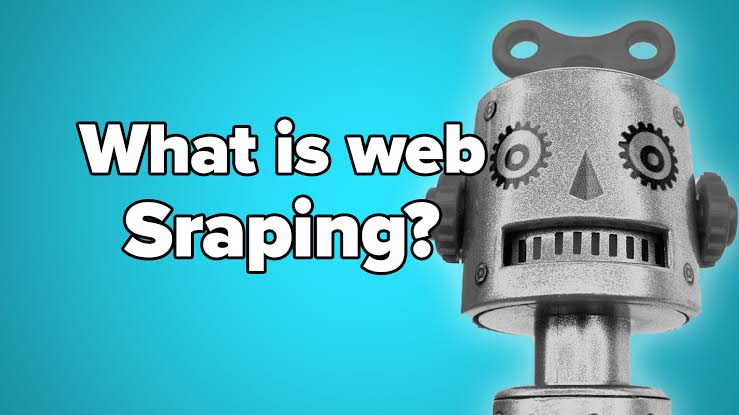How Advanced Can Web Scraping Be?

Web scraping has been popular for the past 10 years, helping companies and organizations grab the data they want at any time they want it.
It started when the idea of big data became a thing, and brands discovered that decisions made from relevant data performed better than those made without.
Web scraping began as an ordinary copy and paste exercise, where you would visit a web page and grab the content, then paste in a local depository.
This process was hectic and highly inefficient. The data collected took too much time and was barely valid. It also had so many holes and errors.
Along the line, software, programs, tools, and computers were invented to make web scraping faster and better.
It became automated, allowing you to gather an abundant amount of data from multiple sources at once. This made it easier and much more enjoyable. For examples of how to extract data from a website within the automotive industry, see this link.
But it also made the data harvested more accurate and relevant. Today, web scraping involves using proxies and scraping bots that combine to make the exercise more efficient.
Yet, more recently, we saw the introduction of AI-driven tools to boost productivity, increase accuracy, and improve performance. This is especially obvious in the automotive industry, where we see a steady progression in growth and advancement as these tools become widely applied.
Web Scraping and How It Works In the Automotive Industry
Web scraping is a process that begins with knowing the exact type of data you need, followed by using highly advanced tools to interact with where the data is found to collect that data in enough quantity.
The tools shown above include proxies, scraper bots, and AI software. Once they have collected this data, it is parsed before it is stored or applied almost immediately.
Particularly in the automotive industry, the process of web scraping involves visiting millions of car manufacturing websites and marketplaces to collect relevant data from multiple sources simultaneously.
Once this is done, the data can be used to decide car makes, prices, and the marketing of its space parts.
The more data a car manufacturer has, the easier it is to get into consumers’ minds and deliver products that get easily accepted into the market.
Automotive industry data also helps these companies predict the future of the automotive market and position themselves for even better profitability.
Features and Primary Functions of Web Scraping
Web scraping has similar functionality in the automotive industry as it does anywhere else. Below are some of the best functions of web scraping:
- It Allows Automation
Once we decide that data is essential to business, the next concern is scrape. Running it manually would take too much time and produce almost no useful results.
But web scraping takes away all that challenges by automating data extraction. You can now quickly collect data without breaking a sweat.
- It Delivers an abundant Amount of Data
The entire web scraping system doesn’t just automatically collect a handful of data, but it ensures this data is supplied in abundance.
The best part is this data is not left unstructured and meaningless, as web scraping often doesn’t end until that data is transformed to include structure and meaning.
- It Has Practical Applications
All that extraction process would be meaningless if web scraping does not have practical application and use cases.
These use cases are widespread and can be enjoyed by any brand in the world regardless of its industry or field.
The Most Recent Developments in Web Scraping
The most recent development in web scraping is the introduction of AI-driven tools, which has helped reshape the process.
Web scraping was all about interacting with several websites at once and collecting every data type.
However, with these AI-driven tools, the process can be as specific as you want it to be using scraper APIs that can work to extract specific datasets from specific platforms.
With these new tools, you also have to involve almost zero human input as the tools can take up the whole process, perform it and learn and adapt as they go.
Also, they are better at evading limitations and restrictions such as IP blocks, CAPTCHAs, changes in website structures, and geo-restrictions.
How to Use an Automated Web Scraper
When people want to learn how to use an auto web scraper, below are some of the common use cases of these tools in the automotive industry:
- Monitoring Consumer Sentiment
One of the most important data in the automotive world is buyers’ behavior and sentiments. It is so important that it can determine what is sold and what is left and what enters the market and what does not.
By using an auto web scraper, a brand can collect this important data and study it to dominate the market.
- Monitoring Trends and Price Intelligence
It is also important to keep an eye on the market trends. What is trendy is what will sell and what is trendy today might not be trendy by this time next year.
Scraping tools help to provide all the data from across the internet, which ensures manufacturers stay on top of every trend and make the most profit from them.
Similarly, the data can set up intelligent pricing tactics that respond to the seasons and demand, becoming higher at certain times and lower at certain times.
Conclusion
Data can be used everywhere, including in the automotive industry. It is even more necessary here because people’s buying habits are getting more influenced by the data online.
And the way to extract this data is evolving, and with the introduction of Machine Learning and AI, it is clear that web scraping will become very advanced in the near future.



